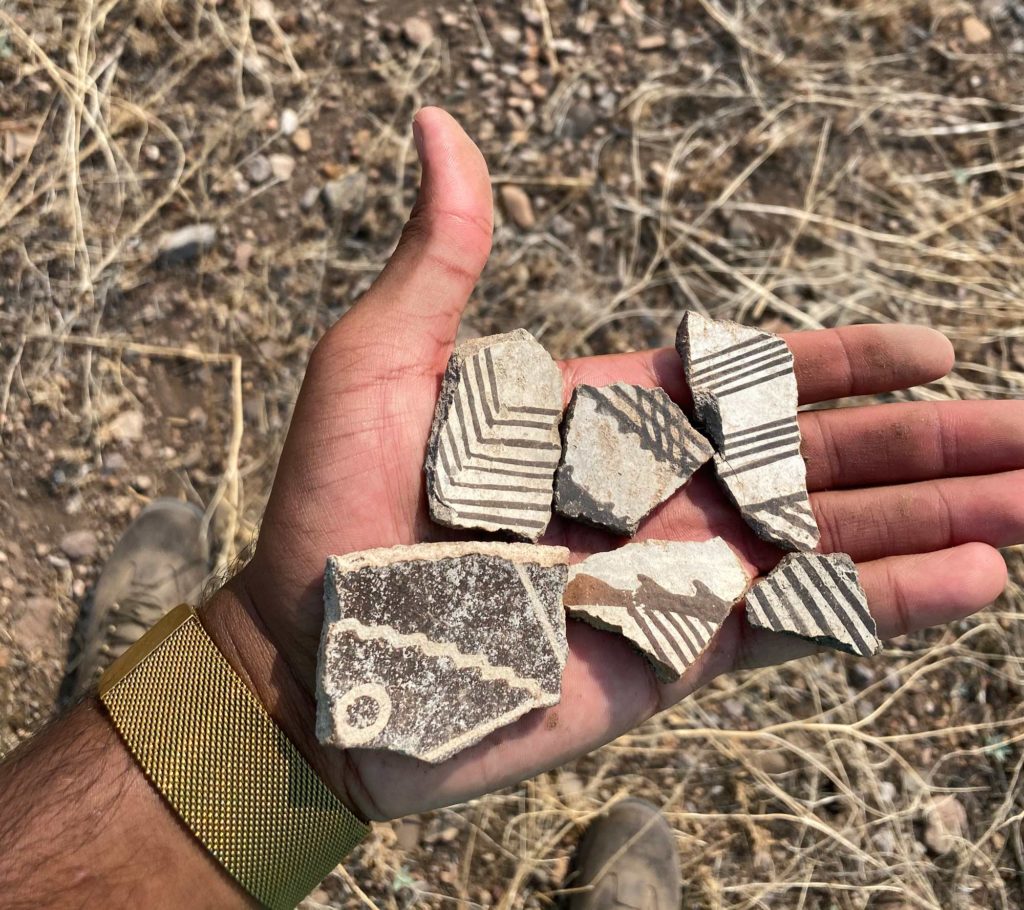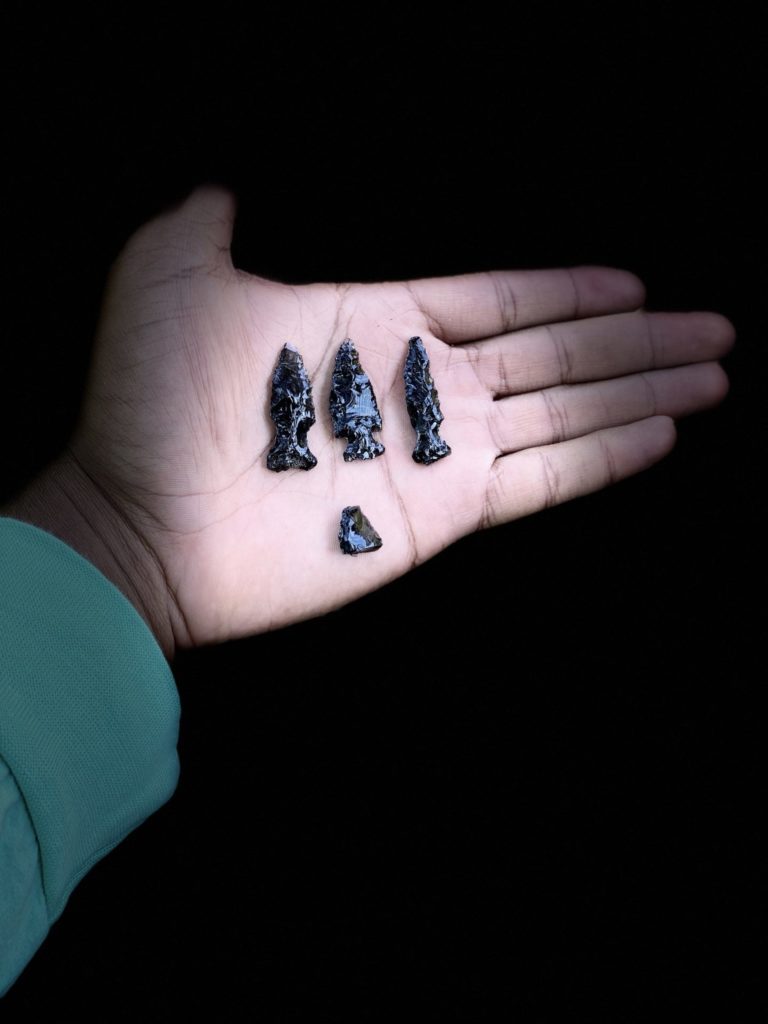- Home
- >
- Preservation Archaeology Blog
- >
- Arqueología: Entendiendo nuestro pasado para abra...
Mr. Cortijo Contreras is bilingual. He offers an English-language version of this post following the Spanish.
(22 Junio 2021)—Siempre he visto la arqueología como una vía para ayudar a otros; especialmente, aquellos que han sido silenciados (mujeres, niños, pobres, ancianos, negros, y todos aquellos grupos con desventajas sociales) en el discurso histórico que nos rodea. Cuando hablo de “ayudar” trato de implementar la idea de trabajar y explicar lo que estas diversas comunidades silenciadas y oprimidas han vivido a través de la historia, pero no ha sido relatada pues, como dice Winston Churchill: “La historia está escrita por los vencedores”. Ahora bien, para algunas personas, quizás, hablar de la arqueología no siempre es indicio de poder ayudar a estas comunidades y tampoco de poder explicar los procesos históricos cuando la cultura material se ha visto afectada con el “desarrollo humano” que ha invadido el mundo entero.
Sin embargo, he aprendido que la arqueología va más allá de excavaciones. La arqueología es un proyecto que busca entender el desarrollo humano, desde el comienzo de sus existencia hasta hoy día. En el momento que yo logré entender cómo fomentar el trabajo arqueológico desde diferentes areas fue que comprendí el valor de la preservación arqueológica.
Estos primeros días en el field school han sido muy productivos. Para empezar, aunque soy un estudiante graduado en Arqueología, nunca tuve la oportunidad de trabajar en campo, así que es mi primera experiencia en campo (eso me tiene muy motivado). Segundo, en estos días visitando los diferentes sitios arqueológicos (Valencia, Romero, Woodrow, Oro Valley, Nine Mile, y Gila Farm) he logrado visualizar y poner en contexto la importancia de la preservación.

“La preservación es un trabajo para el futuro.” Al leer o escuchar algo como esto, pienso en cómo mediante la preservación de los artefactos, estructuras, documentos y, otros materiales culturales, se le puede brindar espacio a futuras generaciones de llegar a nuevas interpretaciones y generar nuevos conocimientos con lo que ya se ha excavado.
Recientemente, en el sitio de Woodrow encontré una pieza de cerámica la cual aparentaba tener la simulación de lo que eran unas montañas. Quienes han estado cerca de ahí saben que las montañas rodean toda el área. Al ver eso, pensé en que quizás la población que estaba en este sitio intentó plasmar su vista en la cerámica que yo tenía en mis manos. Le pregunté a Allen Denoyer y me dijo: “It could be, but we don’t really know. It’s interpretation.” ¿Será así? Bueno, probablemente.

En la misma línea puedo hablarles de interpretaciones en otros lugares. Thomas A. Dowson, en 2000, escribe un articulos llamado “Why Queer Archaeology?” En este se expone el relato del arqueólogo Greg Reeder quien demostró que unos arqueologos estaban trabajando en material Egipcio y encontraron una tumba del reino antiguo con dos hombres en ella; en un principio interpretaron esto como dos hermanos. Sin embargo, varios años después y con la ayuda de la preservación, se pudo llegar a nuevas conclusiones. La realidad era que si se comparaba la iconografía encontrada en la tumba, se podían hallar grandes similitudes a la iconografía utilizada para esposos.
De igual forma, reconozco que vivimos en un mundo machista y patriarcal. Durante estos día estuvimos observando el trabajo con litica. Rapidamente he comenzado a pensar las diversas posibilidades que existen de trabajar la piedra. Tal cual mencionó Allen Denoyer en la coferencia, su mayor uso era para la caza de animales. En muchas areas se ha establecido la vaga idea de que solo los hombres cazaban y las mujeres permanecían en la casa. Sin embargo, con estudios más profundos de lo que ya se tiene se pueden llegar a nuevas interpretaciones que idiquen todo lo contrario. Si de algo estoy seguro es que, no todas las mujeres permanecieron en su hogar ni mucho menos la figura de la madre soltera es algo nuevo.

Es ahí donde reside la belleza e importancia de la preservación: una vez logras preservar un artefacto, documento, estructura, etc., se pueden dar un sin número de interpretaciones que te hagan llegar a diversas conclusiones y, a su vez, brinden nuevos conocimientos. Nuevos conocimientos porque la verdad nunca es absoluta y nosotros no buscamos la verdad; solo un aproximado a ello para cada vez estar más cercas de quienes dieron comienzo a lo que nosotros hemos ido corrompiendo. Bajo esta visión, es que nace mi interés por trabajar colecciones de museos pues mediante estas puedo aportar nuevos conocimientos y ayudar a brindar un mayor entendimiento de lo que nuestros antepasados fueron y aún nosotros continuamos siendo. Soy un estudiante graduado en Arqueología que, actualmente, terminé mi primer año en la Escuela de Derecho. Ambas ramas me ayudarán a poder llegar a diversas comunidades que se encuentran en desventaja social y, a la mismas vez, a repensar la historia desde diferentes puntos de vista. Estoy emocionado por lo que se aproxima.
Archaeology: Understanding our past to embrace our future
I have always seen archaeology as a way to help others, especially those who have been silenced—women, children, poor people, elderly people, and Black people—in the historical discourse that surrounds us. When I speak of “helping,” I try to implement the idea of working and explaining what these various silenced and oppressed communities have experienced throughout history.
These stories have not been told, largely because the historical discourse has been written by people in privileged positions. Now, for some people, perhaps, talking about archaeology is not always an indication of being able to help these communities, nor of being able to explain the historical process when material culture has been affected by the “human development” that has invaded the whole world.
However, I have learned that archaeology goes beyond excavations. Archaeology is a project that seeks to understand human development, from the beginning of its existence until today. The moment I began to see how to promote archaeology from different points of view was when I fully understood the value of archaeological preservation.
These first days in field school have been very productive. To begin with, although I am a graduate student in Archaeology, I never had the opportunity to work in the field, so it is my first experience (that has me very motivated). In addition, we have been visiting different archaeological sites, such as Valencia, Romero, Woodrow, Gila River Farm, and a reconstruction of a pithouse at Steam Pump Ranch in Oro Valley. Thanks to these visits, I have managed to visualize and put in context the importance of preservation.

“Preservation is a job for the future.” When I read or hear something like this, I think about how preserving artifacts, structures, documents, and other cultural materials helps future generations be given the space to arrive at new interpretations and generate new knowledge from what has already been excavated. With this vision, my interest in working in museum collections was born, because through these I can contribute new knowledge and help provide a greater understanding of who our ancestors were.
Recently, at the Woodrow site, I found a piece of pottery that appeared to simulate mountains. Those who have been near there know that the mountains surround the entire area. Seeing that, I thought that perhaps the community that was settled in this place tried to capture their sight in the ceramics that I held in my hands. I asked Allen Denoyer and he said, “It could be, but we don’t really know. It’s interpretation.” Is it so? Well, probably.

Along the same lines, I can tell you about interpretations in other places. In 2000, Thomas A. Dowson wrote an article called, “Why Queer Archeology?” In this article, archaeologist Greg Reeder wrote about how some archaeologists who were working in Egypt found a tomb of the Old Kingdom with two men in it; at first they interpreted this as two brothers. However, several years later and with the help of preservation, new conclusions could be reached. The reality was, that if you compared the iconography found in the tomb, you could find great similarities to the iconography used for husband and wife.
In the same way, I recognize that we live in a patriarchal world. During my experimental archaeology experience at the field school, I immediately thought about the various possibilities that exist for working with stone. As Allen Denoyer mentioned, its main use was for the hunting of animals. In many areas the vague idea that has been established was that only men hunted and women stayed in the house. But with more in-depth studies, we can put forward new interpretations suggesting that sometimes, things were done differently. I am sure that not all women remained at home, and I am sure that there were single mothers, whom history mostly ignores.

Nonetheless, this is where the beauty and importance of preservation reside: Once you manage to preserve an artifact, document, structure, etc., you open the door to a number of interpretations that make you reach various conclusions and, in turn, provide new knowledge. New knowledge and interpretations are important, because the truth is never absolute and we do not seek it—just an approximation to it to get closer and closer to those who started what we are studying.
I am a graduate student in Archaeology who currently finished my first year at law school. Both disciplines will help me reach diverse communities that are socially disadvantaged and, at the same time, rethink history from different points of view. I’m excited for what comes next.
2 thoughts on “Arqueología: Entendiendo nuestro pasado para abrazar nuestro futuro”
Comments are closed.
Thank you, Josué Cortijo Contreras, for your comments. There is so much we have to learn from the cultures that came before us. I’m struck by your comments on women and those who have not conformed to the patriarchal structure we are so willing to apply to history. Your dual degree in law and archaeology could be significant in the future of research in the field. Thank you.
Gracias por sus palabras.